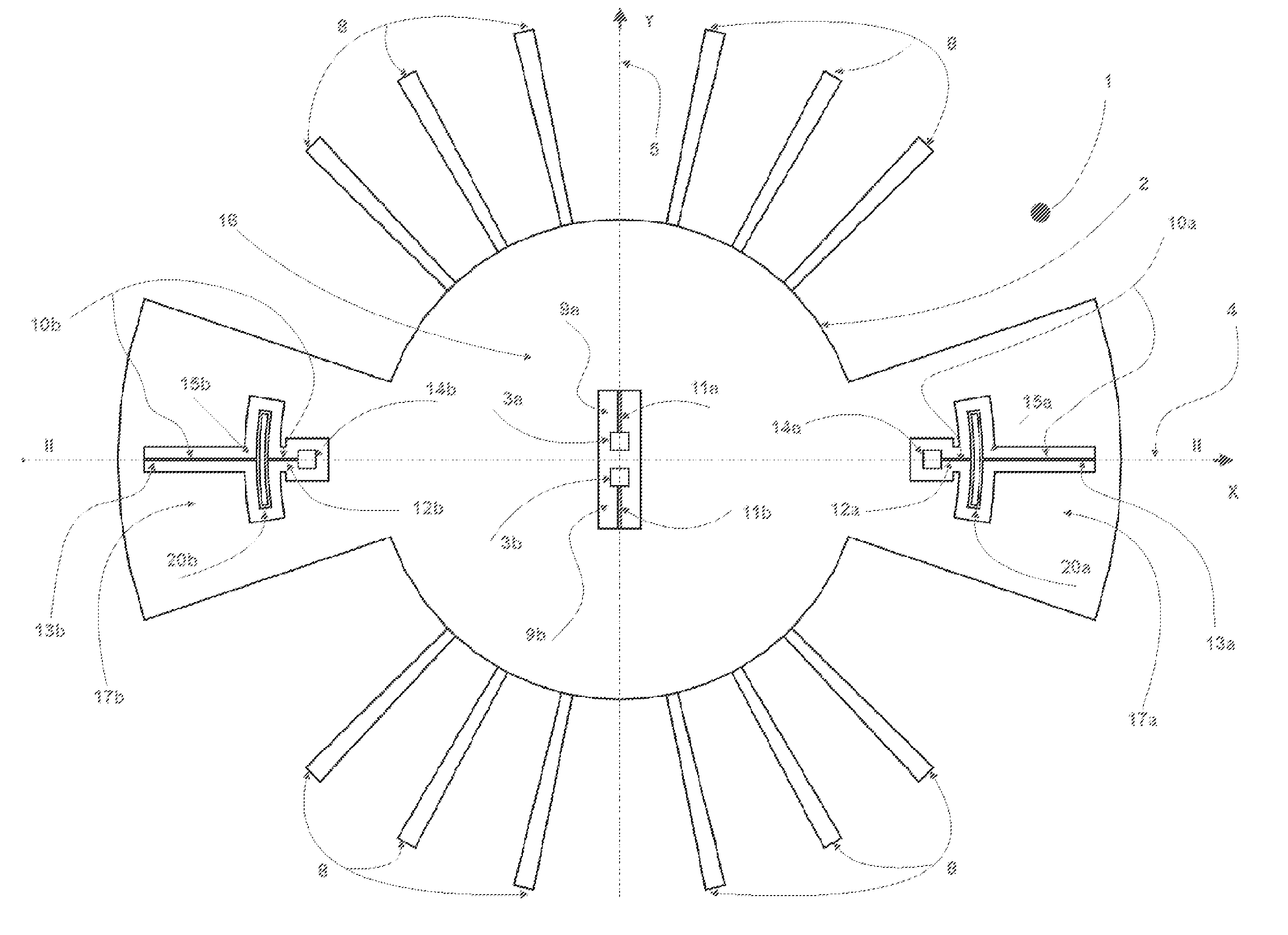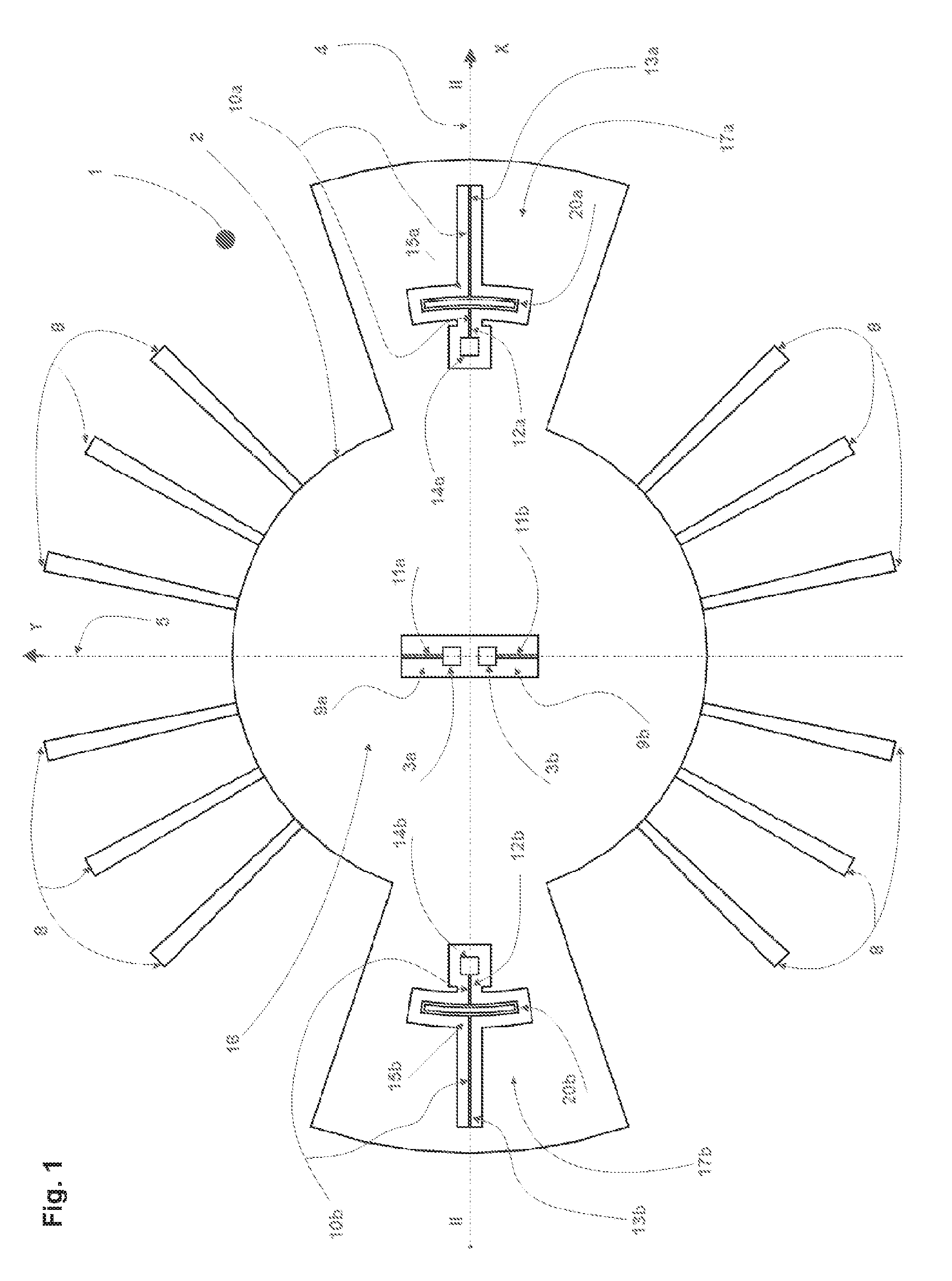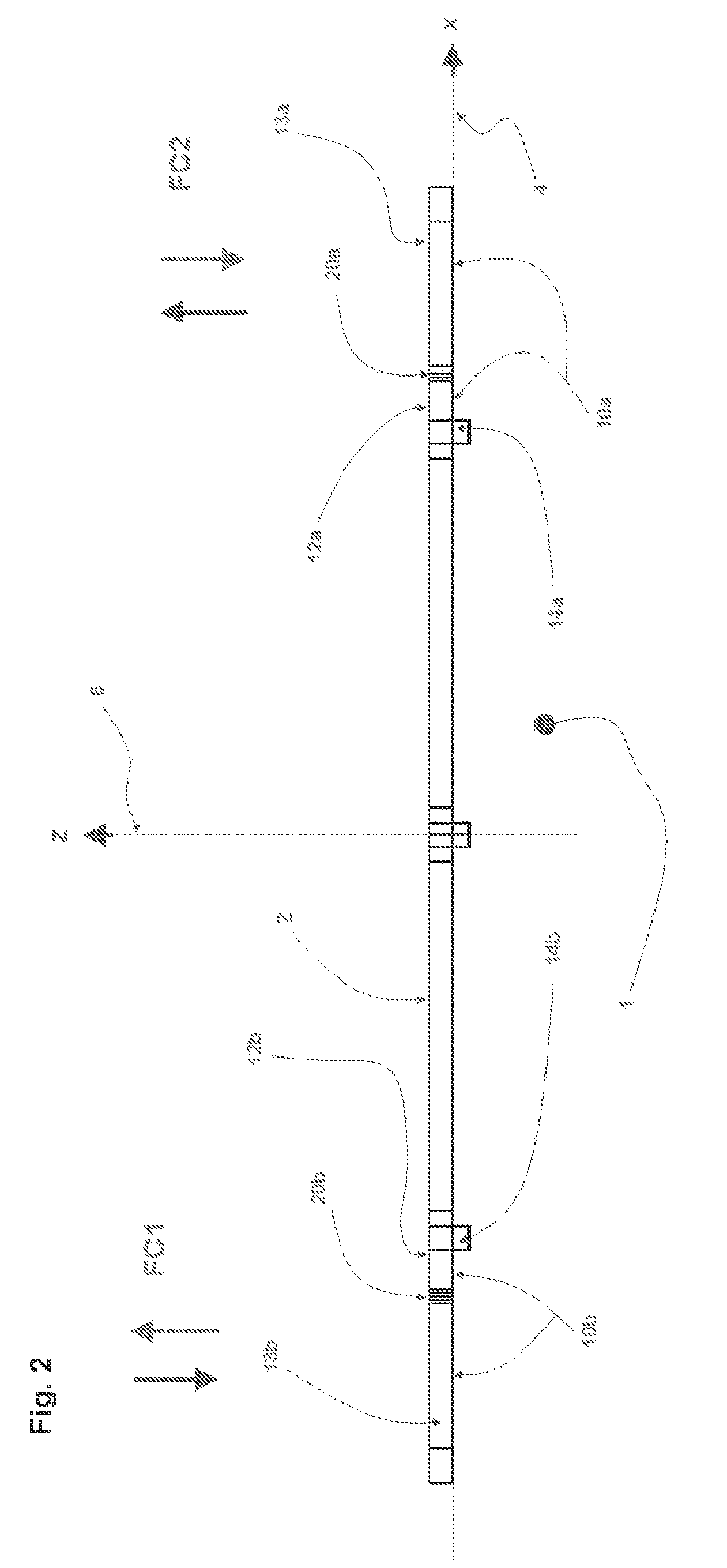Micromechanical rate-of-rotation sensor
a sensor and micromechanical technology, applied in the direction of acceleration measurement using interia force, turn-sensitive devices, instruments, etc., can solve the problems of reducing the detecting surface of the sensor, achieve high sensitivity for detection of rates, increase the sensitivity of the sensor, and prevent excessive deflection of the vibrating structure about the detection axis
- Summary
- Abstract
- Description
- Claims
- Application Information
AI Technical Summary
Benefits of technology
Problems solved by technology
Method used
Image
Examples
first embodiment
[0036]The sensor illustrated in FIG. 1 in plan view comprises a substrate 1 as a basic element as is sufficiently known from the prior art. A vibrating structure 2 is mounted relative to the substrate 1 at opposite points of suspension arranged in pairs and having the form of mounting pins 3a, 3b, 14a, 14b as the coupling structures. The mounting pins 3a, 3b, together with spring elements 11a, 11b, form first inner suspension means 3a, 3b, 11a, 11b along the Y axis 5, whereas the mounting pins 14a, 14b, together with the spring elements 10a, 10b, form second outer suspension means 14a, 14b, 10a, 10b along the X axis 4. The spring elements 10a, 10b, 11a, 11b connect the vibrating structure 2 to the mounting pins 3a, 3b, 14a, 14b.
[0037]The vibrating structure 2 is mirror-symmetric to both, the detection axis 5 and the sense axis 4. Furthermore, it is point symmetric to the rotation center of the vibrating structure 2, which coincides with the point of origin of the coordinate system...
second embodiment
[0044]FIG. 5 shows the sensor in a schematic plan view, in which the vibrating structure 2 is mounted by means of central suspension means 3, 11a, 11b instead of the first inner suspension means 3a, 3b, 11a, 11b. The central suspension means coincides with the center of gravity of the vibrating structure 2 and is located at the point of origin of the coordinate system.
[0045]As in the first embodiment, the vibrating structure 2 is mirror symmetric to both, the detection axis 5 and the sense axis 4. Furthermore, it is point symmetric to the central suspension means 3, 11a, 11b. As for the rest, the vibrating structure is substantially identical to the vibrating structure 2 of the first embodiment, in which connection it is referred to the description thereof.
[0046]FIG. 6 shows the central suspension means 3, 11a, 11b in an enlarged view. It is comprised of an armature 3 which is firmly connected to the substrate 1 and rises from the substrate 1 in the direction of the drive axis 6. Th...
PUM
 Login to View More
Login to View More Abstract
Description
Claims
Application Information
 Login to View More
Login to View More - R&D
- Intellectual Property
- Life Sciences
- Materials
- Tech Scout
- Unparalleled Data Quality
- Higher Quality Content
- 60% Fewer Hallucinations
Browse by: Latest US Patents, China's latest patents, Technical Efficacy Thesaurus, Application Domain, Technology Topic, Popular Technical Reports.
© 2025 PatSnap. All rights reserved.Legal|Privacy policy|Modern Slavery Act Transparency Statement|Sitemap|About US| Contact US: help@patsnap.com



